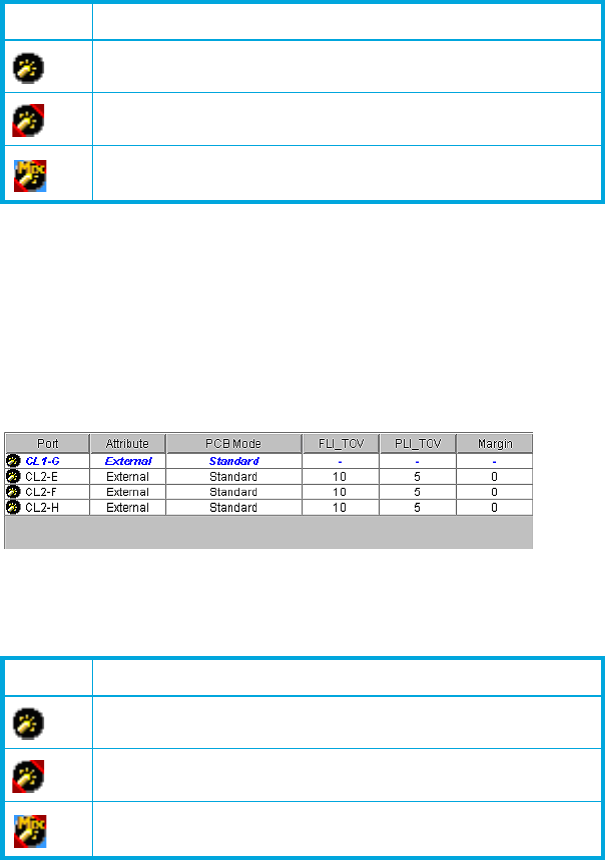HP StorageWorks External Storage XP user guide (T1706-96006, June 2006)
Table Of Contents
- HP StorageWorks External Storage XP user guide
- Contents
- About this guide
- 1 Overview of connecting external arrays
- 2 Preparing for External Storage XP operations
- System requirements
- External Storage XP requirements
- Installing External Storage XP
- Preparing for External Storage XP settings
- Powering arrays on or off
- Using mapped external LUs from the host connected to the local array
- Uninstalling External Storage XP
- Limitations on External Storage XP operations
- Figure 11 Example of external LU with 2 TB or less
- Figure 12 External LU capacity is larger than the specified emulation type’s basic capacity (OPEN-3 example)
- Figure 13 External LU capacity is smaller than the specified emulation type’s basic capacity
- Table 4 When external LU’s emulation type is OPEN
- Table 5 When external LU’s emulation type is for mainframes
- Combining External Storage XP with other HP StorageWorks products
- 3 Managing cache with external storage
- Guidelines for using cache with external storage
- Determining, setting, or changing the external LU cache mode
- Partitioning cache for external storage
- Determining the number and size of needed partitions
- Creating Cache partitions
- Changing storage system modes
- 4 External Storage XP panes
- 5 Configuring external LUs
- Overview of configuring external LUs
- Setting an external array’s port
- Setting a local array’s port attributes
- Mapping external LUs (Add LU)
- Setting alternate paths for external LUs
- Adding alternate paths by selecting multiple external LUs (Add Paths)
- Deleting alternate paths by selecting multiple external LUs (Delete Paths)
- Checking an external LU’s status (LDEV Information)
- Disconnecting external arrays or LUs
- Checking the connection status and resuming external LU operations (Check Paths & Restore Vol.)
- Restoring external LUs (LDEV Restore)
- Stopping the use of paths to an external LU by specifying an external array’s WWN (Disconnect Paths)
- Restoring paths to an external LU by specifying an external array’s WWN (Check Paths)
- Changing an external array’s port setting
- Stopping the use of paths to an external LU by specifying a local array’s port (Disconnect Paths)
- Restoring paths to an external LU by specifying a local array’s port (Check Paths)
- Deleting external LU mappings (Delete LU)
- 6 Troubleshooting NAS Blade systems that include external arrays
- 7 Remote command devices
- 8 Troubleshooting External Storage XP
- A Notes on connecting external arrays
- Connecting Thunder 9500V subsystems
- System parameters for connecting Thunder 9500V subsystems
- Relationship between serial numbers in the Device list on the LU Operation pane and Thunder 9500V subsystem models
- Relationship between the WWN of the port on the Thunder 9500V subsystem and the controller
- Path status and examples of recovery procedures (Thunder 9500V subsystems)
- Connecting TagmaStore AMS and TagmaStore WMS subsystems
- System parameters for connecting TagmaStore AMS and TagmaStore WMS subsystems
- Relationship between serial numbers in the Device list on the LU Operation pane and TagmaStore AMS and TagmaStore WMS subsystem models
- Relationship between the WWN of the port on the TagmaStore AMS or TagmaStore WMS subsystem and the controller
- Path status and examples of recovery procedures (TagmaStore AMS and TagmaStore WMS subsystems)
- Connecting XP12000/XP10000 Disk Arrays
- Connecting XP1024/XP128 Disk Arrays
- Connecting XP512/XP48 Disk Arrays
- Connecting HP 200 Storage Virtualization System as external storage
- Connecting EVA arrays
- Connecting Thunder 9500V subsystems
- B Required volume capacity for emulation types
- C Adjusting volume capacity for copy pair setting
- D Using an XP12000/XP10000/SVS200 with an EVA3000/5000 external storage
- E Configuring MSA1000/1500 as external arrays
- Index

External Storage XP user guide 69
Displays ports assigned to each port attribute in the branch below each port attribute. External
Storage XP uses ports set to external. One of the following icons appears on the left of each port
number:
Port Operation list
Displays ports in the local array that External Storage XP can use or set. The port information displayed
corresponds to the item selected in the Port tree.
You can sort the list by attribute. For example, to sort by port numbers, click Port on the list.
Rows corresponding to ports that are about to be acted upon appear in the Preset list, and the
corresponding row in the Port Operation list appears in blue italics.
Figure 39 Port Operation list
• Port
Port number. One of the following icons appears for each port:
• Attribute
Port attribute. External ports are used for connecting to the external array. To set a remote command
device, you can use the port for which the Initiator/External MIX mode has been set.
• PCB Mode
Port’s PCB mode. Standard, High Speed, or MIX (for Initiator/External MIX mode) appears. External
ports do not have High Speed mode. For more information about the PCB mode, see the
HP StorageWorks LUN Configuration and Security Manager XP user guide for the
XP12000/XP10000/SVS200. For more information about the Initiator/External MIX mode, see
”Using Continuous Access XP or Continuous Access XP Journal with remote command devices” on
page 117.
• FLI_TOV (Fabric Login Timeout Value)
Maximum time allowed (in seconds) for an external array to perform a fabric login after being
connected to a switch. This value is preset and cannot be changed.
• PLI_TOV (Port Login Timeout Value)
Maximum time allowed (in seconds) for the external array to perform a port login after being
connected. This value is preset and cannot be changed.
• Margin
Icon Description
Port in Standard mode.
Port in High Speed mode.
Port in Initiator/External MIX mode
Icon Description
Port in Standard mode.
Port in High Speed mode.
Port in Initiator/External MIX mode










